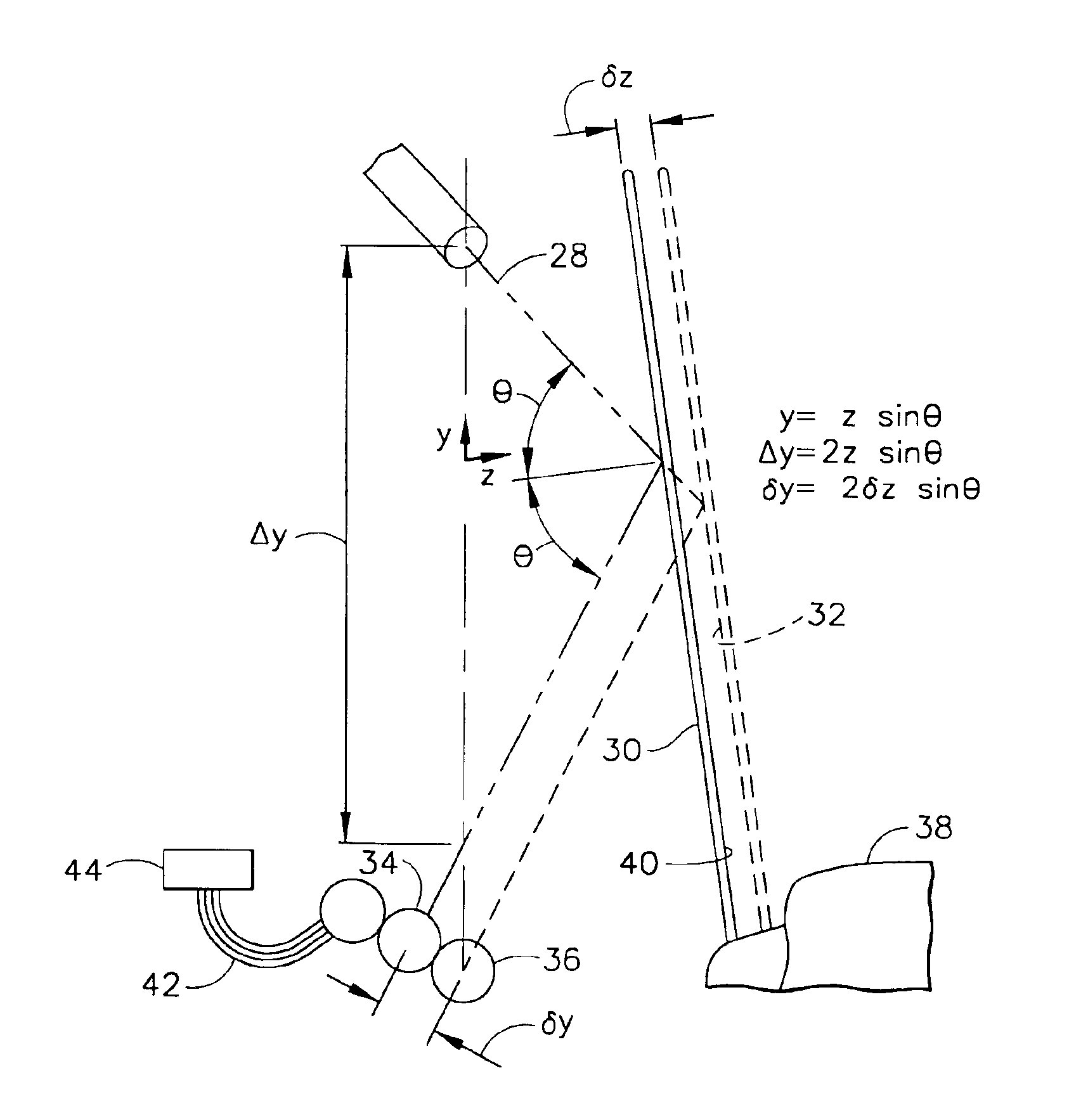High-temperature optical rotary and linear position sensor
a technology of optical rotary and linear position sensor, which is applied in the direction of converting sensor output optically, instruments, measurement devices, etc., can solve the problems of limiting accuracy, affecting the accuracy of measurement, and often complicated tasks
- Summary
- Abstract
- Description
- Claims
- Application Information
AI Technical Summary
Problems solved by technology
Method used
Image
Examples
Embodiment Construction
[0016]The following detailed description is of the best currently contemplated modes of carrying out the invention. The description is not to be taken in a limiting sense, but is made merely for the purpose of illustrating the general principles of the invention, since the scope of the invention is best defined by the appended claims.
[0017]The present invention generally provides a means to measure the position, both rotary and linear, of at least one member. It is an object of the present invention to be utilized at high temperatures without any effect on the accuracy of readings. By way of example, the present invention may be particularly well suited for aerospace applications, such as jet engine bleed air valves. The present invention differs from the prior art in that it provides a rotating and linear position sensor that utilizes a multitude of light receiving members and geometry to determine the position of a second member relative to a first member. As such, optics are util...
PUM
 Login to View More
Login to View More Abstract
Description
Claims
Application Information
 Login to View More
Login to View More - R&D
- Intellectual Property
- Life Sciences
- Materials
- Tech Scout
- Unparalleled Data Quality
- Higher Quality Content
- 60% Fewer Hallucinations
Browse by: Latest US Patents, China's latest patents, Technical Efficacy Thesaurus, Application Domain, Technology Topic, Popular Technical Reports.
© 2025 PatSnap. All rights reserved.Legal|Privacy policy|Modern Slavery Act Transparency Statement|Sitemap|About US| Contact US: help@patsnap.com



